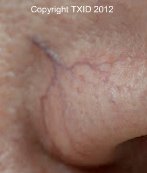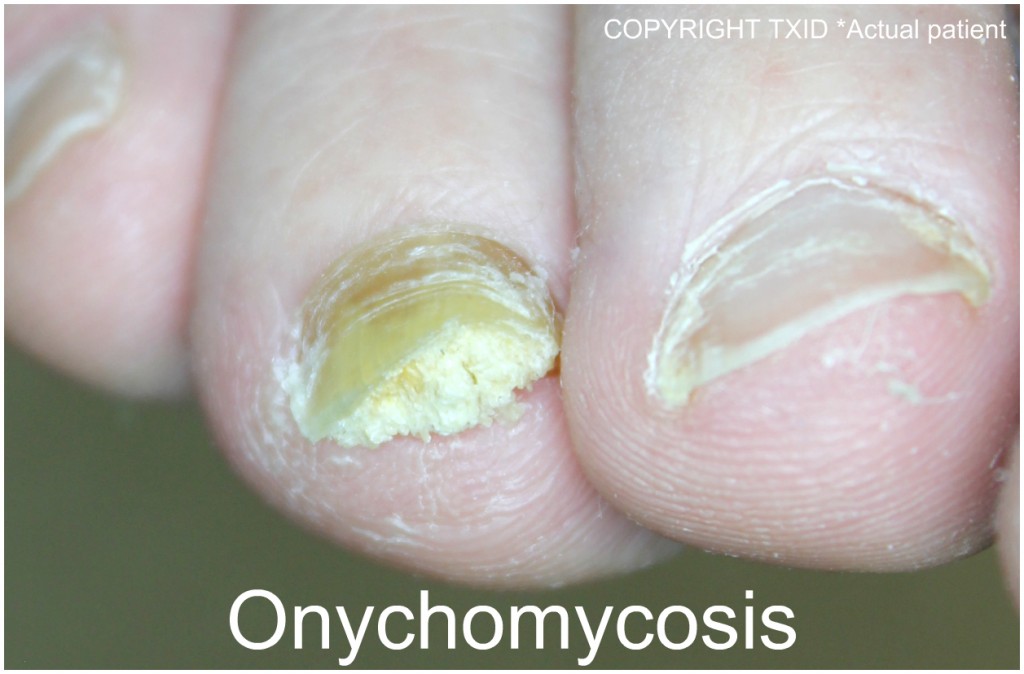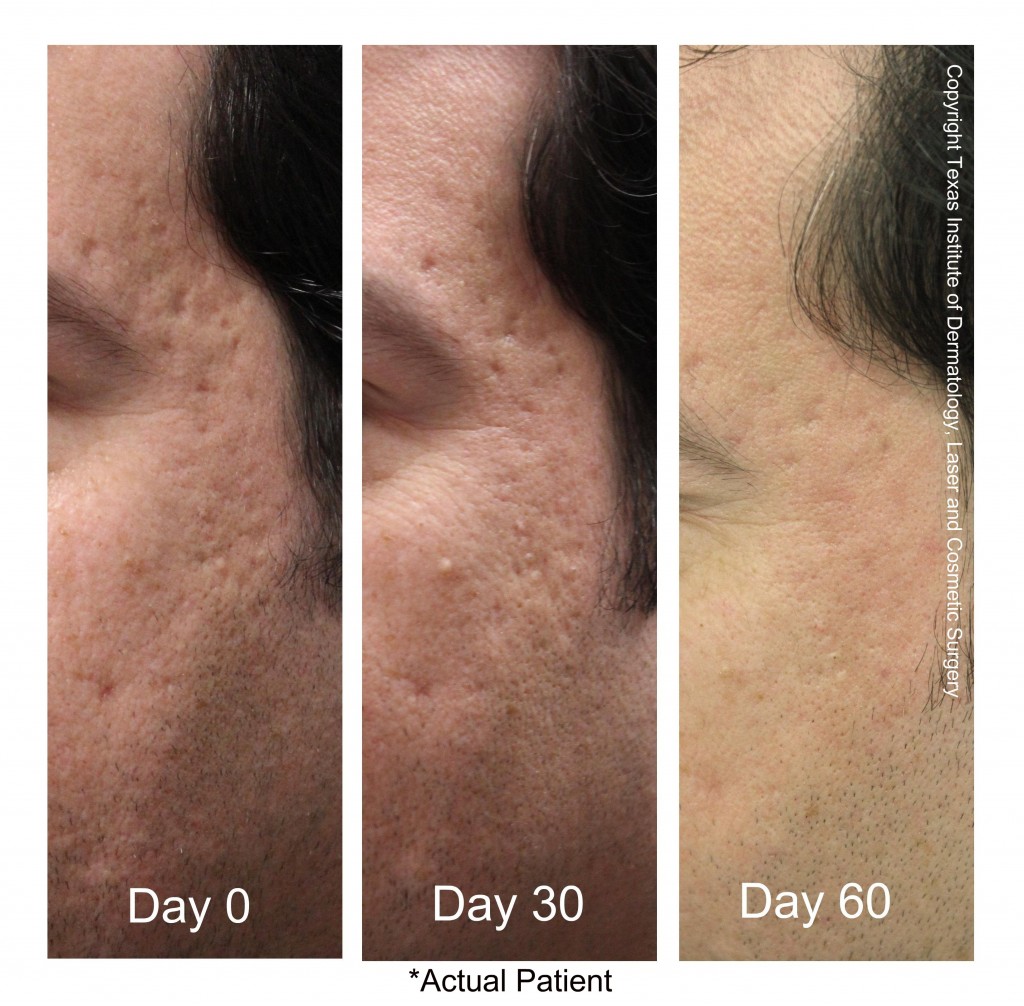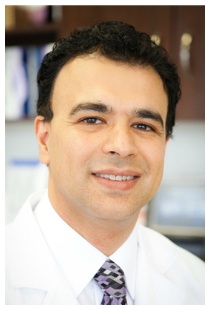Ask the Experts
Is laser surgery an effective treatment for genital warts? (J. – San Antonio)
Genital warts, which affect both males and females, are caused by the human papillomavirus (HPV), which is the same virus that causes warts on other parts of the body. These warts generally develop on the moist, soft tissue in the genital area and often manifest as small, skin-colored bumps that may look similar to cauliflower. In some cases, these warts can be quite small, making them difficult to see with the naked eye.
Treatment options for genital warts vary depending on the severity of the infection. In most cases, genital warts can be successfully treated with medication. In more persistent cases, surgery may be a more effective approach. The most technologically advanced form of surgical treatment we offer is the CO2 laser or cryosurgery in combination with Zyclara, a topical immunodulator and/or salicylic acid, a keratolytic agent according to Dr. Ghohestani, a renowned San Antonio dermatologist. Our expert dermatologists can meet with you to discuss your particular condition, take necessary background information, and recommend one or two treatment options that may help provide the results you desire. It is important to let your sexual partner know about having a genital wart, since these warts are highly contagious. Additionally, oral sex may increase risk of epithelial cancer in the throat.
5/24/12 – What treatment options do you provide for psoriasis? (D. – San Antonio)
Psoriasis is among the more common skin diseases affecting the life cycle of skin cells. Thick, silvery, red patches of skin form on the surface, leading to irritation including itchiness, redness, and even pain. This particular skin disease tends to be persistent and often goes in and out of remission throughout one’s life. While there is currently no cure for psoriasis, treatments are available that may help reduce irritation and discomfort. The goal of these treatments are to interrupt current growth cycles and help smooth the skin. Available treatments at our San Antonio – Boerne Clinic include:
- Medications (both oral and injectable) – This treatment option is generally reserved for more severe cases of psoriasis due to the the side effects of each individual medication.
- Topical Treatments – By themselves, these treatment aim to smooth the skin and help reduce irritation at the surface. They can be quite helpful in less severe cases. However, as severity increases, combination with other therapies may be required.
- Ultra Violet (Phototherapy) Treatments – This treatment is administered using an ultraviolet laser that shines ultraviolet light on the affected areas. Texas Institute of Dermatology utilizes a high powered narrow band UV B for treatment of Psoriasis. This is a very effective treatment for spots on extremities and trunk.
Results from these treatments will depend on the severity of the condition as well as other health factors.
5/22/12 – Do you have a treatment for Keloids? (C. Roberts – San Antonio)
Keloids are a type of scar characterized by excess growth of scar tissue at the site of healing. These scars can come as a result of an irritation to the skin such as Acne, Burns, illness such as Chickenpox, Cuts and Piercings, etc. Some studies have shown genetic ties to Keloid scarring, which helps to explain why some individuals tend to develop more Keloid scars than others. This type of scarring is also more common in individuals from 10-20 years of age, african americans, hispanics, and asians. The chest and back, especially upper chest area, are more prone to keloid formation.
While these scars are generally not medically harmful, they can be cosmetically troubling and sometimes painful. Several treatment options are available at our San Antonio-Boerne clinic for treating scars including:
- Dermabrasion
- Dermsanding
- Laser Treatment
- Laser Skin Resurfacing
- Subcision
- Punch Excision and Grafting
- Dermal Fillers
- Chemical Peels
- Steroid Injections
- Cryofreeze
Dr. Ghohestani is one of the few physicians in the San Antonio and Boerne areas with special expertise in treating Keloids. He is a member of the Keloid Research Foundation . After completing a consultation, Dr. Ghohestani can recommend the one or two treatment options that may reduce the appearance of keloids and help you achieve the look you desire.
5/9/12 – What is the basic charge for spider vein treatment? (Sherry – San Antonio)
 Spider veins, a milder form of Varicose Veins, are veins that have become gnarled and enlarged over time. While any vein can become varicose, the veins in our legs and feet tend to be at higher risk because standing and walking increases the pressure in your veins. Usually, spider veins are fairly painless and become a cosmetic issue. However, in some cases, the veins can become painful and may also indicate underlying circulatory issues.
Spider veins, a milder form of Varicose Veins, are veins that have become gnarled and enlarged over time. While any vein can become varicose, the veins in our legs and feet tend to be at higher risk because standing and walking increases the pressure in your veins. Usually, spider veins are fairly painless and become a cosmetic issue. However, in some cases, the veins can become painful and may also indicate underlying circulatory issues.
The most widely used treatment for spider veins is Sclerotherapy, which has been around since the 1930s. This injectable irritant causes the vein to eventually turn into scar tissue and fade from view. Sclerotherapy is estimated to be effective on 50-80% of spider veins with each injection. Costs for this treatment are $349 for a single treatment covering a 10 cm x 5 cm area or you can buy a three-treatment package for $899.
As technology continues to grow, intense pulsed light (IPL) treatments are becoming more and more popular due to their speed and ease of treatment. Advanced Fluorescent Technology (AFT) for Rosacea may help to treat spider veins that present on your cheeks. This treatment, for a 10 cm x 5 cm area costs $299 or a three-treatment package can be purchased for $699. Another form of light treatment is the long-pulsed YAG laser for spider veins. This treatment is similar to AFT in that it sends strong pulses of light into the vein causing it to fade over time. The biggest difference is that the long-pulsed YAG laser is more focused and can be effectively used on the legs, hands, and even the face. This treatment is widely becoming the treatment of choice for smaller, more stubborn veins. The costs for long-pulsed YAG are between $399 to $459 for a 10 cm x 5 cm area or $899 for a three-treatment package.
5/8/12 – Is UV Treatment Effective for Vitiligo? (Anonymous – San Antonio)
Vitiligo is an autoimmune disease that causes the skin to lose and/or stop producing melanin, the pigmentation that dictates the color of your eyes, skin, and hair. This loss of pigmentation is why white patches on the skin, the hair, or even the eyes may appear and continue to grow over time. While the loss of pigmentation is not associated with physical pain, the loss of color may be unsightly or embarrassing.
Recently researchers have identified candidate genes that are associated with a higher chance of developing Vitiligo. Interestingly, people with brown and dark eyes have a higher change of developing Vitiligo than do those who do not have these characteristics. Scientists are unsure why this finding has developed, but further studies are ongoing.
While Vitiligo is not curable, there are treatment options that may help to slow down or stop the loss of pigmentation, and in some cases, may help to restore color. At the Texas Institute of Dermatology, we offer a high-power, narrow band UVB laser treatment for Vitiligo. The rays of the laser deliver a special form of UVB that uses a specific ultraviolet B wavelength. This form of treatment, due to its ease of process, is swiftly becoming the treatment of choice for patients suffering from Vitiligo.
5/8/12 – I have Granuloma Annulare. Do you think you can help me? (Sherry – San Antonio)
Granuloma Annulare is a chronic skin condition characterized by raised, red bumps and/or patches that generally form in a circular pattern. Women, children, and/or young adults are more likely to get Granuloma Annulare. Individuals who are over 40 and who have diabetes mellitus or thyroid disease are at greater risk of getting General Granuloma Annulare, which is a little more severe. Most regularly, the bumps are found on the hands, knees, feet, and elbows. In most cases, they will disappear after a period of two years. These bumps are sometimes associated with other diseases, such as Diabetes Mellitus. Therefore, a thorough search of underlying disease is warranted.
While meeting with Dr. Ghohestani, he will make sure the clinical diagnosis is Granuloma Annulare, thereby ruling out any other skin conditions that mask themselves as Granuloma Annulare. Additionally, the doctor will take a thorough patient history, including looking at underlying diseases, to get at the root cause of the problem. After receiving this information, the dermatologist can them make a few treatment recommendations that may help address your skin condition.
5/8/12 – What is the post-care treatment, limitation, and side effects from having nail fungus laser treatment done on several nails on one foot? (Liz – San Antonio)
 Nail fungus is a fungal infection in one or more of your nails. These fungal infections tend to enter through small cuts and/or openings between the nail and nail bed allowing the fungi to grow in and under the nails. If the conditions are right (warm and moist) the fungus will continue to grow.
Nail fungus is a fungal infection in one or more of your nails. These fungal infections tend to enter through small cuts and/or openings between the nail and nail bed allowing the fungi to grow in and under the nails. If the conditions are right (warm and moist) the fungus will continue to grow.
The FDA-cleared Nd:YAG laser treats persistent toenail fungus by creating micro-cavitations in the surface of the nail. The laser then delivers acoustic shock waves onto the surface of the nail that travel through to the nail bed. This process irritates the fungal colony, which may decapsulate the fungus spores. Then, as the fungal infection absorbs the laser light, it may deactivate unwanted organisms while also helping to treat embarrassing yellow and brown streaks in the nail.
Post-care Treatment: In nearly every case, Dr. Ghohestani recommends using oral medication in combination with the laser treatment. Medications such as “Lamisil” help to fight fungal infections from the inside out.
Limitations: Significant changes in nail color limit the laser’s ability to penetrate to the nail bed, thereby treating the root of the problem. Dr. Ghohestani can meet with you and make the necessary recommendations regarding which treatment will work best for you.
Side-effects: No adverse side effects have been noted as a result of the laser nail treatment.
5/8/12 – Can laser toenail treatment be done on Diabetics? (Anonymous – San Antonio)
Treatment of Onychomycosis (nail fungus) is more challenging in diabetic patients due to several factors (i.e. diabetics tend to be more prone to infection). A combination therapy for Onychomycosis using laser light and oral medication (Lamisil) is highly suggested. Dr. Ghohestani can provide some treatment options that may best work for you in order to achieve the results you desire.
5/8/12 – Do I have to wait for my nail to grow back before I can be treated with the laser? (Manuel – San Antonio)
One of the side-effects of toenail fungus is separation or even complete removal of the nail from the nail bed. Treatment is not dependent upon the presence of the nail. The best option is to come in for a consultation. Dr. Ghohestani will examine your toenail and determine the best treatment option given your specific case.
5/8/12 – Do you have anything to get rid of acne scarring on African American Skin? (Valerie – San Antonio)
 At Texas Institute of Dermatology, we offer the latest techniques for Acne Scar treatment. In order to properly treat acne scars, the top layers of the skin need to be removed thereby stimulating collagen production. This allows the skin to build a fresher, clearer surface. Fractional CO2 laser treatments are best suited to promote this natural process. The CO2 laser is precisely engineered to achieve an exact depth of abrasion, thereby reducing potential complications. Deeper scars may require different approaches, such as punch grafts 4-6 weeks prior to laser treatment in order to achieve the look you desire. In some cases, fillers can also be used to bolster scars.
At Texas Institute of Dermatology, we offer the latest techniques for Acne Scar treatment. In order to properly treat acne scars, the top layers of the skin need to be removed thereby stimulating collagen production. This allows the skin to build a fresher, clearer surface. Fractional CO2 laser treatments are best suited to promote this natural process. The CO2 laser is precisely engineered to achieve an exact depth of abrasion, thereby reducing potential complications. Deeper scars may require different approaches, such as punch grafts 4-6 weeks prior to laser treatment in order to achieve the look you desire. In some cases, fillers can also be used to bolster scars.
Different skin pigmentation carries different risks of hyper- and/or hypopigmentation. African American skin, in particular, carries the risk of dyspigmentation if the laser is performed on relatively dark skin. Pre- and post-laser cooling, appropriate settings, and extensive knowledge of the skin are of utmost importance in order to minimize this risk.
5/7/12 – Can you use Botox on sagging cheeks and neck? (Linda – San Antonio)
Unfortunately, BOTOX® Cosmetic is not used to treat aged or sagging skin. BOTOX® relaxes the facial muscles. It Botox is injected between the eyebrows, the so called 11s disappear. However, BOTOX® injection doesn’t affect the cheeks, or deep smile lines. Usually, a filler or laser are treatments of choice for sagging cheeks and/or deep smile lines.
BOTOX® Cosmetic is a purified protein produced by the Clostridium botulinum, which reduces the activity of muscles that cause bothersome wrinkles. Wrinkles on the neck are generally caused by the sternocleidomastoid (SCM) muscle, which goes along either side of your neck allowing you to flex and turn your head. This repeated motion over several years can create bands along the neck (Turkey neck), for which BOTOX® Cosmetic can be a wonderful solution.
The good news is that there are other treatments options that we offer in our clinic that can help to reduce the signs of aged and/or sagging skin. Our most advanced skin tightening and rejuvenation treatment is our state-of-the-art Renew 3×60 treatment. By combining 4 treatments over three sessions aimed at stimulating new collagen growth, the Renew 3×60 system may help to renew your skin from the inside out.
Injectable fillers are another option that may help produce desired results in patients suffering from aged or sagging skin. These fillers can help to fill in gaps where collagen has been lost over the years, helping to fill the lost volume.
Tags: "genital wart", ask dermatologist, Botox, Keloid, Laser vein Removal, Wrinkles






